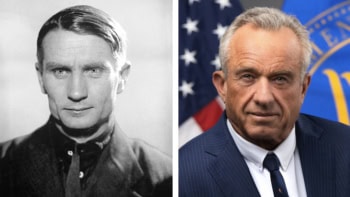Physicists are rightly proud of the way that basic research in the past has paid off in terms of technology that is widely used everyday. We all know the examples: transistors, lasers, optical fibres, magnetic resonance scanners and so on. These inventions have all made lots of money for individuals and companies somewhere in the world. But there are also well known instances where universities or companies did not, or forgot to, patent discoveries that subsequently formed the basis of billion-dollar industries.
Two notorious cases of such missed opportunities in the UK are liquid-crystal displays and erbium-doped fibre amplifiers for optical communications. And the Web – which is sure to feature in all end-of-year round-ups of the most significant developments of the decade – was not patented by its inventors either. Significantly, the CERN particle-physics laboratory, where Tim Berners-Lee and Robert Cailliau invented the Web, recently announced that it was appointing its first director for technology transfer. One of their tasks will be “to promote adequate intellectual property protection rights for new technologies developed at CERN and in collaborating institutes”.
It was with potential missed opportunities in mind that Physics World decided to look into patents in the field of quantum information, one of the fastest growing areas of physics research today (see story). We found that in quantum cryptography – where the quantum properties of photons can be used to keep information secret – all the key experimental breakthroughs appear to have been patented. In quantum computing, however, there is almost universal agreement that the ion traps and photon cavities currently being used to build quantum logic gates will not be used in real quantum computers, if they are ever built. Indeed, the time scale for building a real quantum computer – which would use the quantum properties of light and matter to outperform conventional “classical” computers – was generally agreed to be longer than the lifetime of a patent. Of the patents awarded so far, most would seem to be irrelevant or impossible to defend.
This might not be the message that the increasingly applications-minded research agencies, which are starting to commit large amounts of money to quantum information, want to hear. But they should bear in mind that the pay-back time for many discoveries in basic research is measured in decades, not years, and be patient.
The spice of life
In addition to its staple diet of new research results and science policy debates, the annual congress of the Institute of Physics offers an opportunity to raise the profile of physics in the media. The undoubted star of this year’s congress in Salford was Averil Macdonald, an educational consultant and recent winner of the Institute’s Bragg medal for teaching. Macdonald’s suggestion that physics teachers should given “flashy cars” to show that physics is “a rewarding, high-prestige career” was widely reported, although her more serious message – a call for single-sex science classes for all pupils over the age of 11 – received less coverage.
Macdonald appeared on national television and radio, and was photographed in the Daily Telegraph with her BMW 320i. The same story quoted Susan Greenfield, director of the Royal Institution, as saying that it would be good if “more physics teachers looked like the Spice Girls”. Readers with good memories might recall that the Spices, a colourful all-girl pop group, made similar headlines at the 1997 congress. But in a novel twist, this year’s congress also heard from a pop star turned physicist. Brian Cox, a particle physicist at Manchester University, played keyboards on D:Ream’s number-one hit “Things can only get better” in 1994. At Salford he was performing “High-t diffraction at HERA”. Contrasting the two experiences, Cox revealed to the Manchester Evening News that “physicists have bigger egos than musicians!”.



